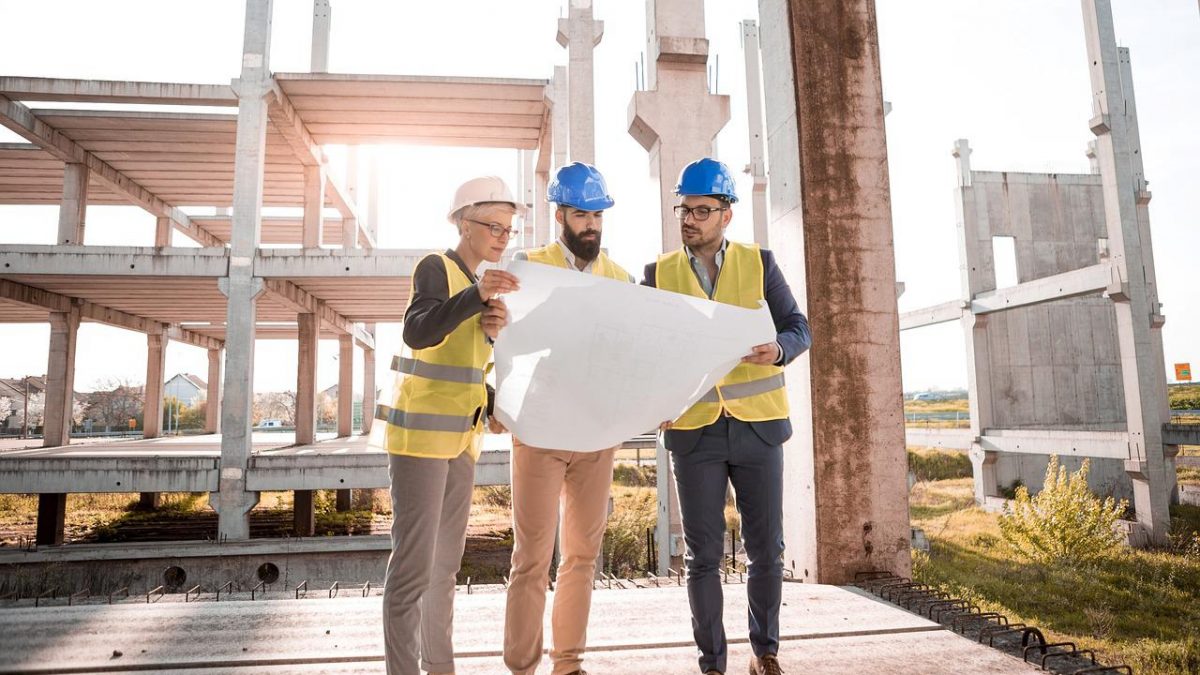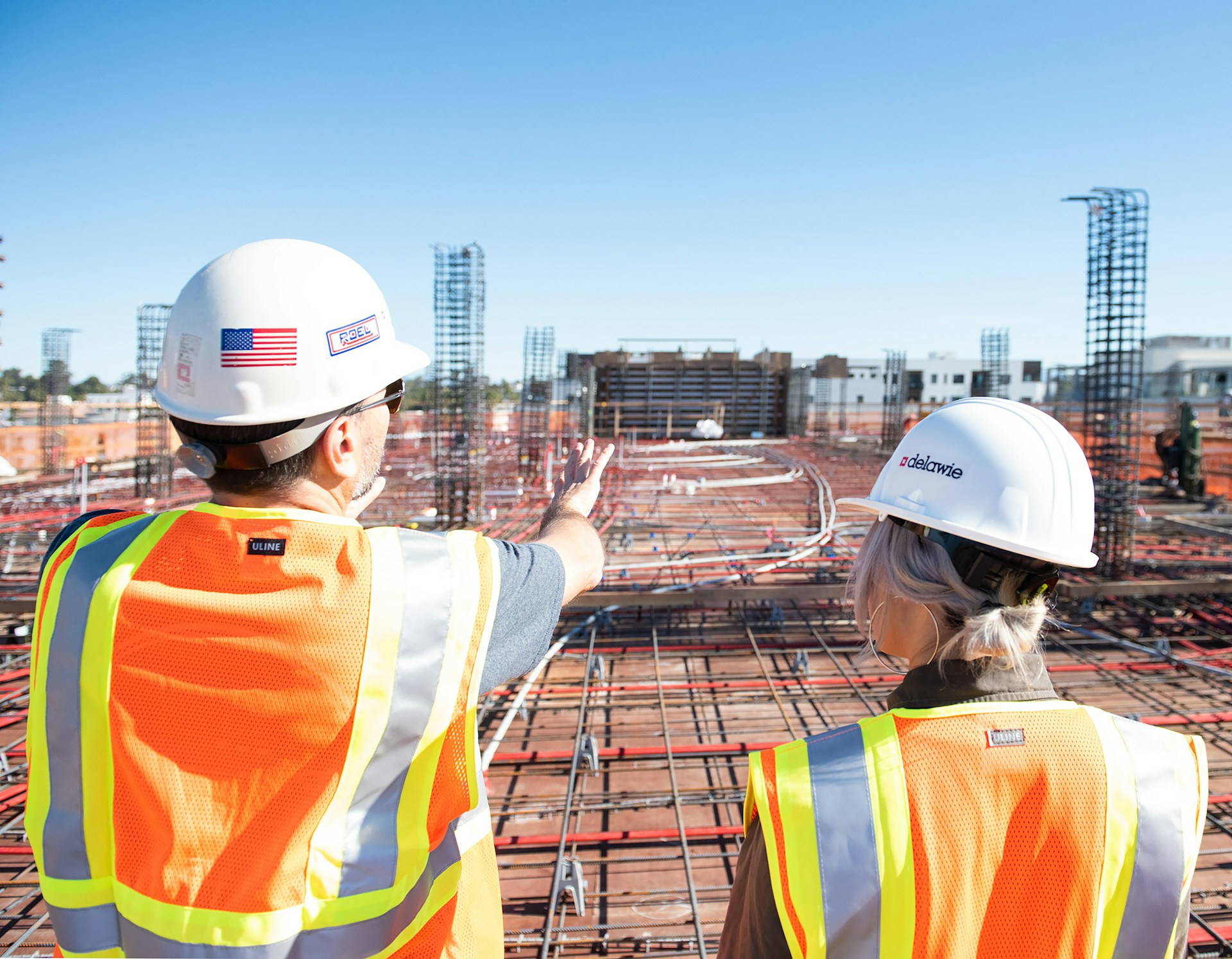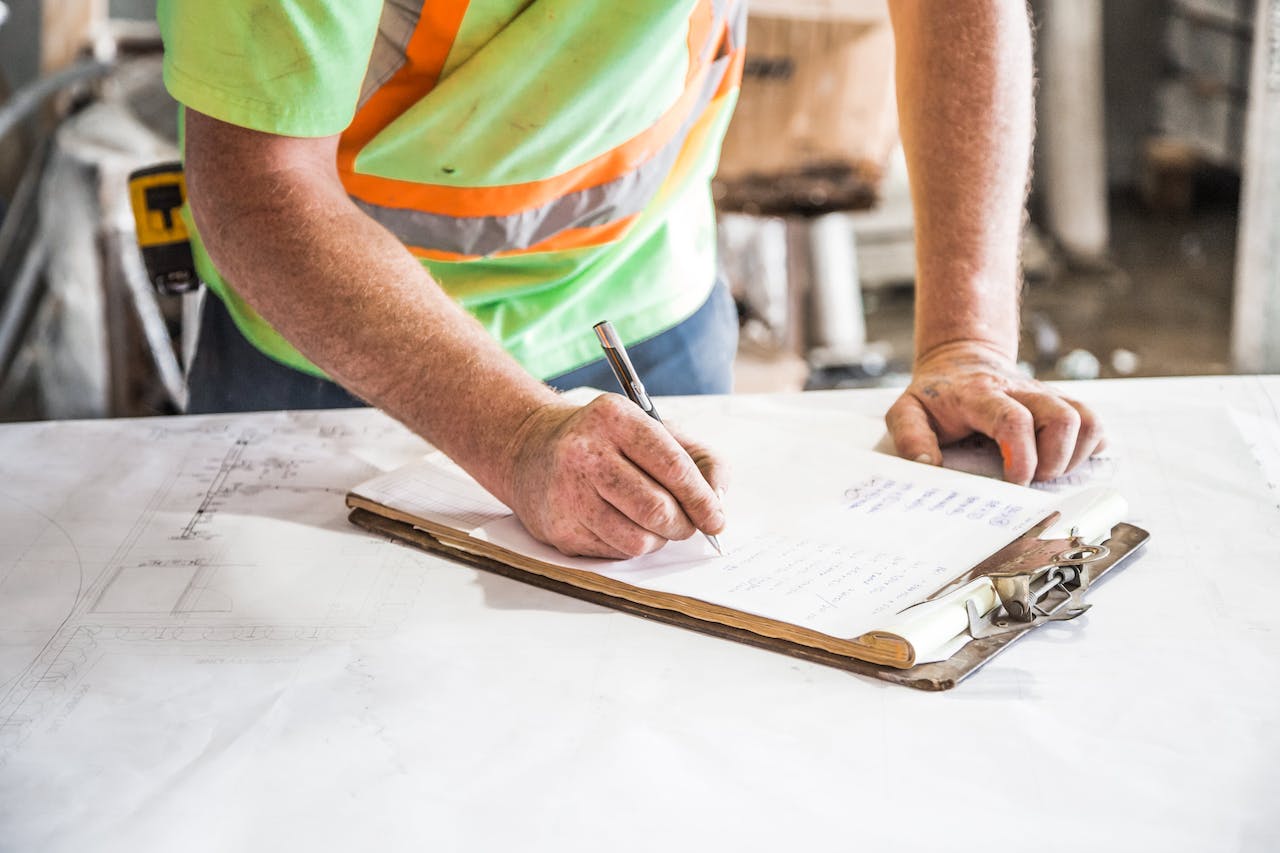The recession of 2020 might have been the shortest we have ever witnessed, but its impacts can still be seen across the E&C Industry. However, stats paint a good picture. The E&C industry had already surpassed the pre-pandemic GDP level by 2020 Q3 and since then has been adding #20 billion dollars every year to the economy. It had also recovered 0.9 million jobs of the total 1.1 million lost due to the pandemic.
But amidst all this positivity, the deep waters of the pandemic have still not settled. And stormy clouds still circle the industry. Deloitte issued its 2022 E&C industry outlook a few days ago. And here, we are discussing the same and how the industry can benefit by using connected construction to work on the five themes mentioned in the report.
Top 5 Themes Of The Deloitte 2022 Outlook Of E&C Industry
#1: The E&C Industry Is Set For Growth in 2022
Positivity surrounds the E&C industry in 2022.
Total construction spending recovered and hit a record high at $1.57 trillion in July 2021. The Associated Builders And Contractors’ Construction Confidence Index (CCI), which had gone down to 38.1 in March, skyrocketed to 60+ during the initial six months of 2021.
Order backlogs too recovered and stood at 8.5 months in July 2021. This was well above pandemic-induced lows but still not as good as average 2019 levels.
This signalled positivity apparent in the Deloitte survey that showed 91% of E&C respondents categorise their business outlook as somewhat or very positive. This is a stark increase of 23% from last year.
And driving all of this positivity is the exceptional performance of the residential sector and growth in expected growth in the non-residential sector from the IIJA worth $1 trillion!
Yes, there has been a disparity between residential and non-residential sector performance.
The residential segment has performed far better than the non-residential.
Due to the low mortgage rates, the housing sector posted a record spending of $770 billion in July 2021, 27% more than the last year and almost 30% up from Feb 2020, i.e. before the pandemic. And given that no new variant surges, housing stats will go stronger in 2022.
On the other hand, the non-residential sector showed a decline. The overall spending declined by 11% in July 2021 compared to Feb 2020. However, the $1 trillion IIJA might provide the extra push the sector needs to be back in business!
The Crux:
Both sectors will grow at similar rates in 2022 and finish the disparity as was the case in 2021. Also, using construction management tools will help both sectors perform more efficiently and get on par.
#2: Pandemic-Induced Challenges To Affect Profit Margin And Project Delivery
The pandemic has exposed how vulnerable global supply chains are. And however, we expected to streamline these issues by 2021, but still, the E&C Industry faces a lot of commotion.
Pandemic-induced shortages of crucial building materials like lumber, steel, paint, cement, aluminium, etc., still persist.
This crisis has a two-fold impact. For one, lack of materials and, on the other hand, the prices have observed double-digit increases every month.
The worrying aspect emerging from these stats is that, on one and, the input costs of construction have gone up steeply, but the bidding costs have not budged much. This mismatch between expenditure and bid price is further poised as a big problem for the industry in 2022.
The solution?
Well, cost optimisation using the integration of digital technologies can help increase margins and profitability.
Tech like construction management tools can help contractors optimise costs to their best possible levels by providing error correction on all four stages of construction management- design, planning, building, and operations.
Moreover, Digital Supply Networks (DSNs) can help contractors remove ambiguity about how and when their materials will be supplied.
The Crux:
Supply chain volatility and disruptions can be the most significant E&C industry challenges of 2022. And then those who will steer through these challenges will be the ultimate success stories.
#3: Connected Construction Is Expected To Unlock New Avenues
E&C Industry has been for long the least digitised industry. But all that is changing for good as more and more engineering firms and other participants deploy connected construction technologies.
These bring assets, processes, people, and job sites on a single platform. This has multiple benefits ranging from optimising asset utilisation and efficiency to gaining greater visibility within operations.
A recent Deloitte survey says that 43% of E&C executives plan investments in new design processes like BIM in 2022.
These connected construction technologies enable businesses to transform from a reactive approach to a proactive and predictive approach. These construction techs can provide visibility across all processes and projects on a single pane.
Some connected construction trends to watch out for in 2022:
- More extensive integration of modularisation and prefabrication can be expected.
- More control over emissions
Performing end-to-end operations management through DBOOM technologies (Design-Build-Operate-Own-Maintain) can help facilitate these trends.
The Crux:
Connected construction is going to be a priority on the CIOs growth agenda. They would be on the lookout for data-driven decisions, ensuring timely delivery of projects across various sites and better control over costs and schedule variances.
#4: Mergers & Acquisitions Will Reign 2022
In 2020, many firms were conserving cash to maintain liquidity. Whereas transaction levels in the initial nine months of 2021 were recorded as 152% of 2020. And also 10% up than all 2019 activities.
A few M&A trends to watch out for are:
- E&C firms have started showing interest in telecom and tech for faster acquisition of upcoming tech. Between Aug 2020 to 2021, US firms acquired 27 firms across electronics, software, motion pictures, and technology consulting and service fields. This is a trend which will further grow in strength in 2022.
- E&C firms will also be seen forming PPPs to capture IIJA opportunities.
- E&C Companies focus on realigning their exposure to end markets via targeted divestiture to balance their risks. They are divesting non-core businesses to focus on major end markets, exiting low-marking product segments, and balancing exposure to under-performing end markets.
- Lastly, non-traditional M&A approaches like forming alliances with tech vendors via an ecosystem approach are likely to stay in focus.
The Crux:
We anticipate a good year for traditional M&As, PPPs, and ecosystems.
#5: Labour Challenges Amidst An Evolving Workplace Landscape
The biggest question on most E&C firms’ minds was recovering from the pandemic: how to restart the work safely? The industry, however, took care of the safety standards, but attracting workers remained a key challenge.
As of August 2021, the industry had yet to recover about 20% of jobs due to the pandemic, but it further lost 3,000 jobs in the same month. While, the overall US nonfarm employment increased by 2,30,000, which poses a significant threat.
E&C contractors are eager to hire, but unfortunately, only 4000 net payroll additions happened, which is a significant issue, and this trend is expected to extend into 2022.
This shortage is having and will continue to have severe effects like project delays and cancellations, losing project bids, projects being scaled back, inability to scale to market needs and so on.
Another factor contributing to labour shortages is the requirement of data engineers, coders, scientists, etc., but they are more willing to work in other industries.
The solution?
Many E&C companies are now expanding their workforce beyond full-time and part-time and engaging in external ecosystems.
Moreover, adopting pre-built construction management technologies from vendors can be a great way to counter the shortage of skilled coders. At the same time, these connected construction technologies enable you to use your construction-associated labour efficiently. It means you can do more with less!
The Crux:
Adapting to existing talent strategies and focusing on creating new talent management and workforce strategies can be critical to mitigating the workforce challenges of 2022.
Connected Construction All Set To Transform The E&C Industry In 2022?
In a nutshell, various construction technologies and connected construction mainly are all set to work magic for the E&C industry in 2022!
Construction management tools can deal with the pandemic-induced challenges of profit margins very efficiently. They help you take corrective actions before or while the work is ongoing. It also keeps track of inspections, shows you expenditure insights and more, enabling you to be proactive and not reactive.
It brings all processes and stakeholders to one place so that no link is missed, and connected construction fulfils what it was meant for!
Lastly, vendor construction technologies are an excellent solution for all sizes and types of construction businesses. Because, as the report has it, they can be the solution for many of the challenges the E&C industry is facing in 2022.




